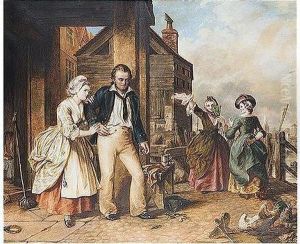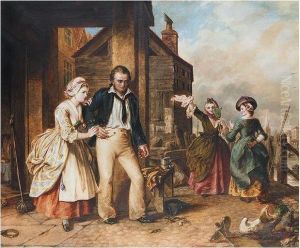Mary Anne Criddle Paintings
Mary Anne Criddle, born on July 14, 1809, was a notable British artist and embroiderer whose work gained recognition in the 19th century. She was born Mary Anne Drewe in Exeter, Devon, England. Coming from a background that valued the arts and education, Criddle developed a keen interest in drawing and embroidery from a young age. Her works, which often intertwined the two disciplines, showcased her exceptional skill and innovative approach to traditional crafts. In 1834, she married Thomas Criddle, and together they became involved in various artistic and philanthropic endeavors.
Criddle's embroidery work was distinctive for its meticulous detail and vibrant colors, which brought her sketches and watercolor paintings to life in thread. Her ability to blend these mediums demonstrated her innovative spirit and contributed to the Victorian era's appreciation of needlework as a form of high art. She was among the pioneering artists who challenged the norms of their time, elevating the status of women in the arts and crafts movement. Despite the limitations placed on women artists during the 19th century, Criddle managed to gain recognition for her work, exhibiting at the Royal Academy of Arts and other prestigious venues.
Her contributions to art and society were not limited to her creative work. Criddle was also actively involved in charitable causes, using her art to raise funds for various social initiatives. She was a proponent of education for women and played a role in supporting the arts as a means of empowerment. After her husband's death in 1864, Mary Anne Criddle continued to work and contribute to the art world until her later years. She passed away on December 14, 1891, leaving behind a legacy of artistic innovation and social activism. Her work continues to be appreciated by art historians and collectors, serving as an inspiration for artists and craftspersons.

